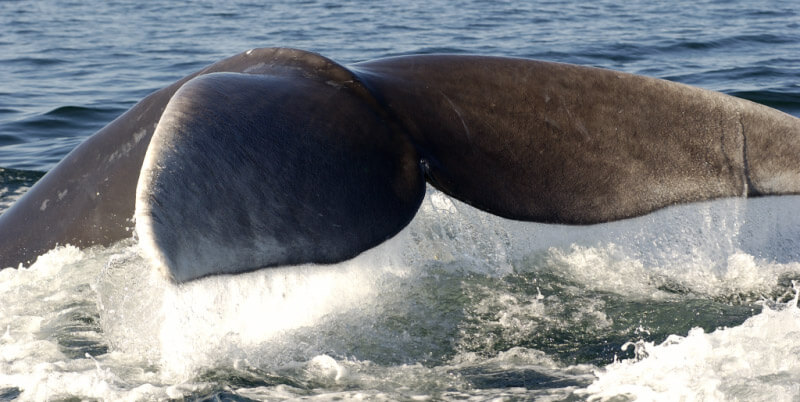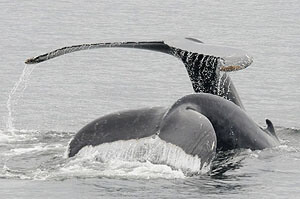Built to purpose
A perfectly hydrodynamic body; a tail that generates a strong thrust both upward and downward; smooth skin that minimizes friction; a dorsal fin which, like the keel of a boat, regulates the flow toward the rear during dives; and pectoral fins that stabilize and increase manoeuvrability. These morphological adaptations allow whales to readily cruise through their aquatic environment.
A question of speed
Dolphins are the true champions of swimming. Although they are capable of sprinting at speeds of up to 27 km/h, their cruising speed is in the range of 15 km/h. The fin whale on the other hand, known as the greyhound of the sea, can reach top speeds of 40 km/h.
Amongst rorquals, the record is held by the sei whale, with an observed speed of 65 km/h! Other whales are slower, such as the bowhead whale which travels at around 5 km/h during migration, while the beluga, at 7 km/h, is considered to be the slowest of the toothed whales. Speed thus varies according to species, duration, depth, and behaviour. Females accompanied by their young are slower, and solitary individuals move faster than those travelling in groups. Additionally, during migrations, whales swim more slowly, as it is preferable to save energy to cover greater distances.
Swimming and breathing: a compromise
Cetaceans travel under the water and come back up to the surface to breath; this is the best compromise between this basic need and the fact that it is less demanding energy-wise to swim below the surface. There are exceptions however. Dolphins, porpoises, belugas, and even minke whales sometimes travel near the surface in a manner known as “porpoising” which consists of swimming fast while lifting their bodies out of the water. At a certain speed, this type of swimming is thought to be advantageous, as it helps reduce resistance to waves.
Speaking of waves, dolphins and minke whales occasionally let themselves be carried by those created by larger whales or the stems of ships. Whales can also swim on their backs, even if this is not the most efficient means of locomotion. And, young cetaceans sometimes swim in echelon position. Lacking the power of adults, they place themselves near the dorsal fin of the adult and are “sucked” toward the latter, thereby reducing their energy expenditure. This is the same principle used in the sea by common bottlenose dolphins and in the skies by migratory birds that fly in flocks.


